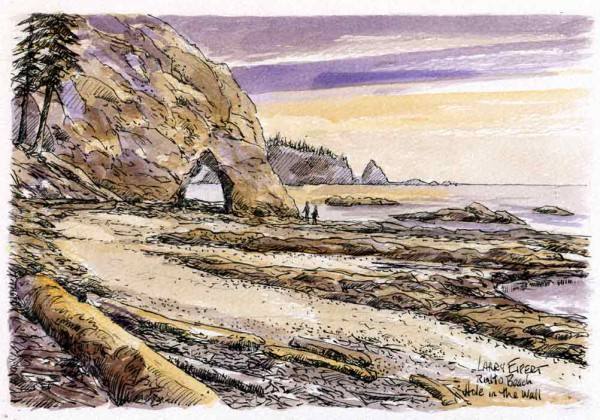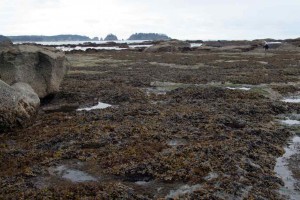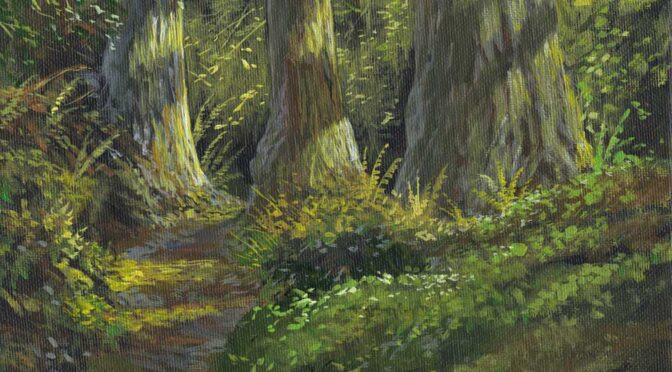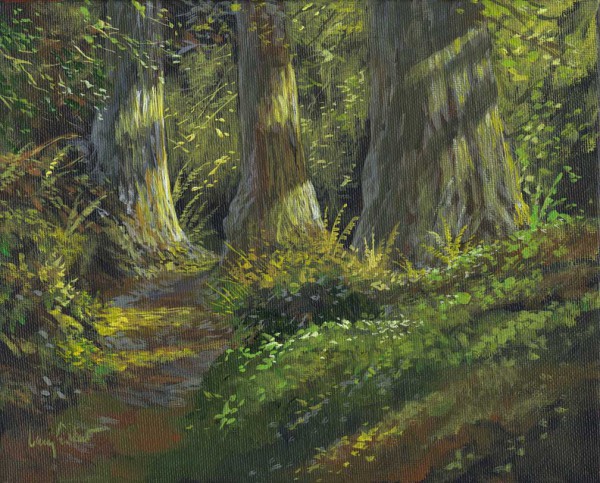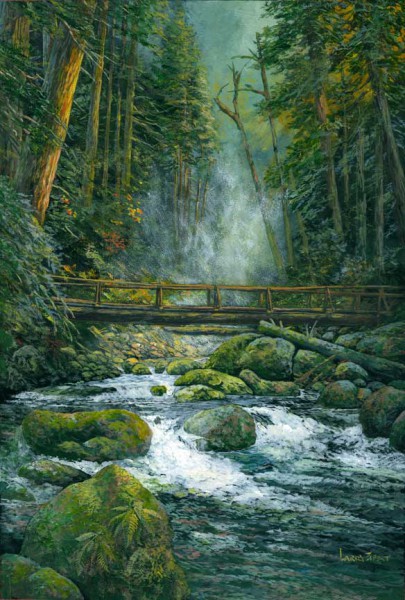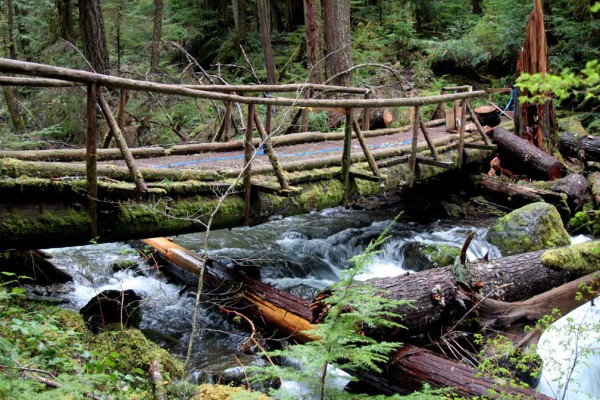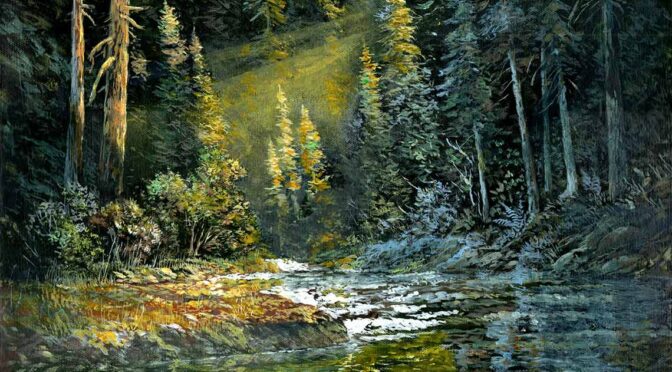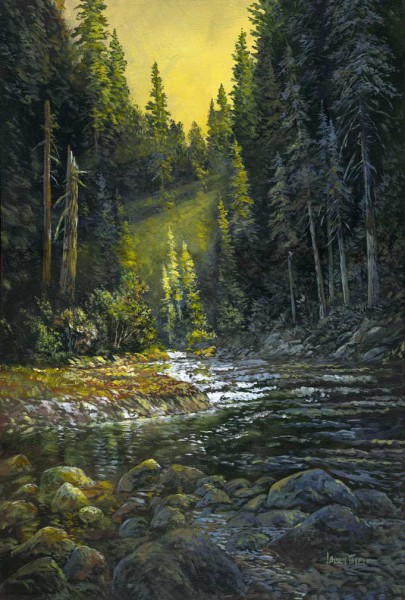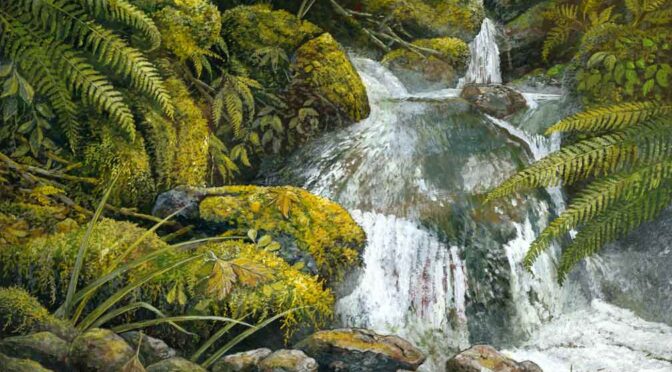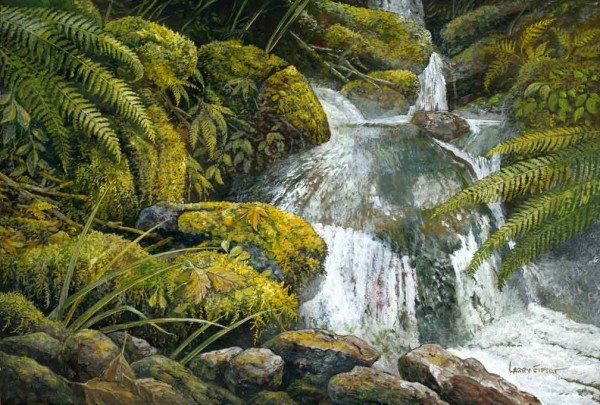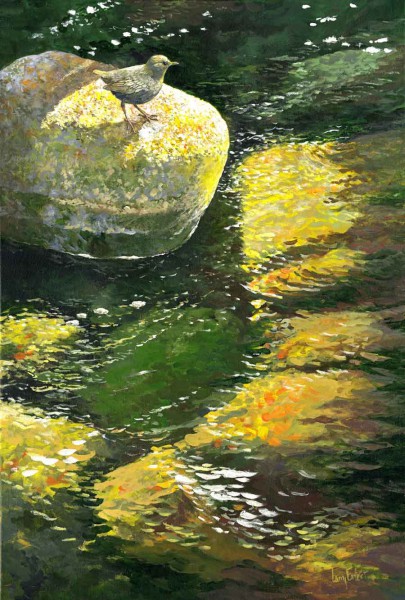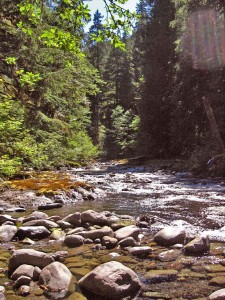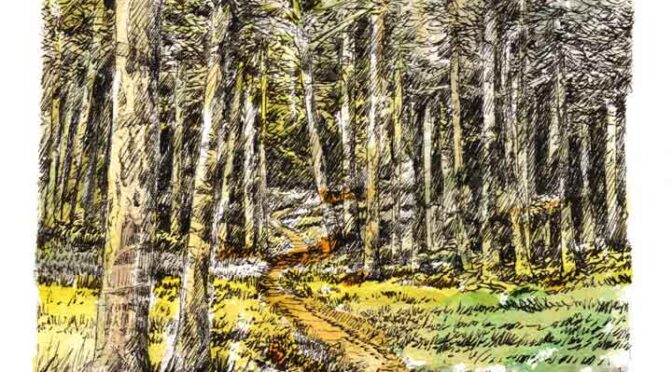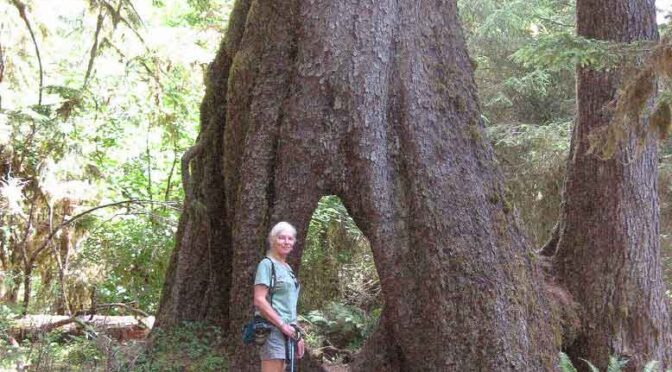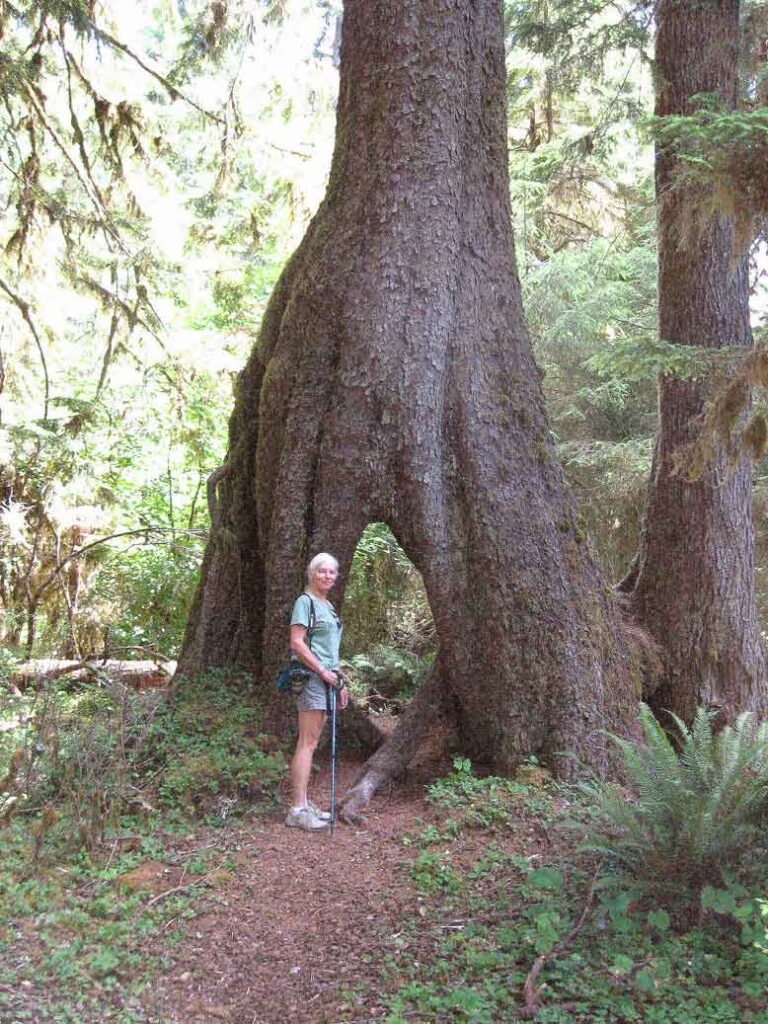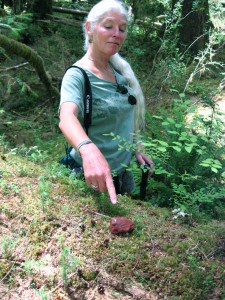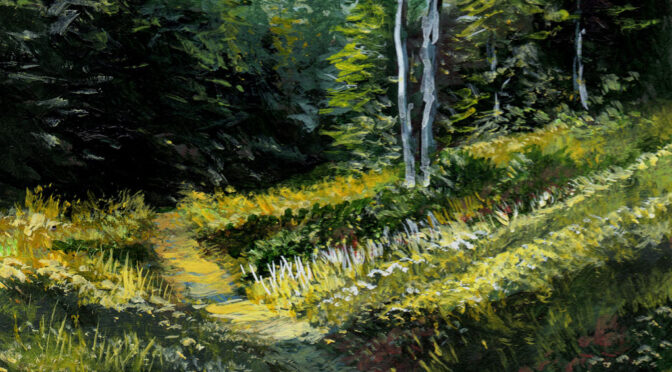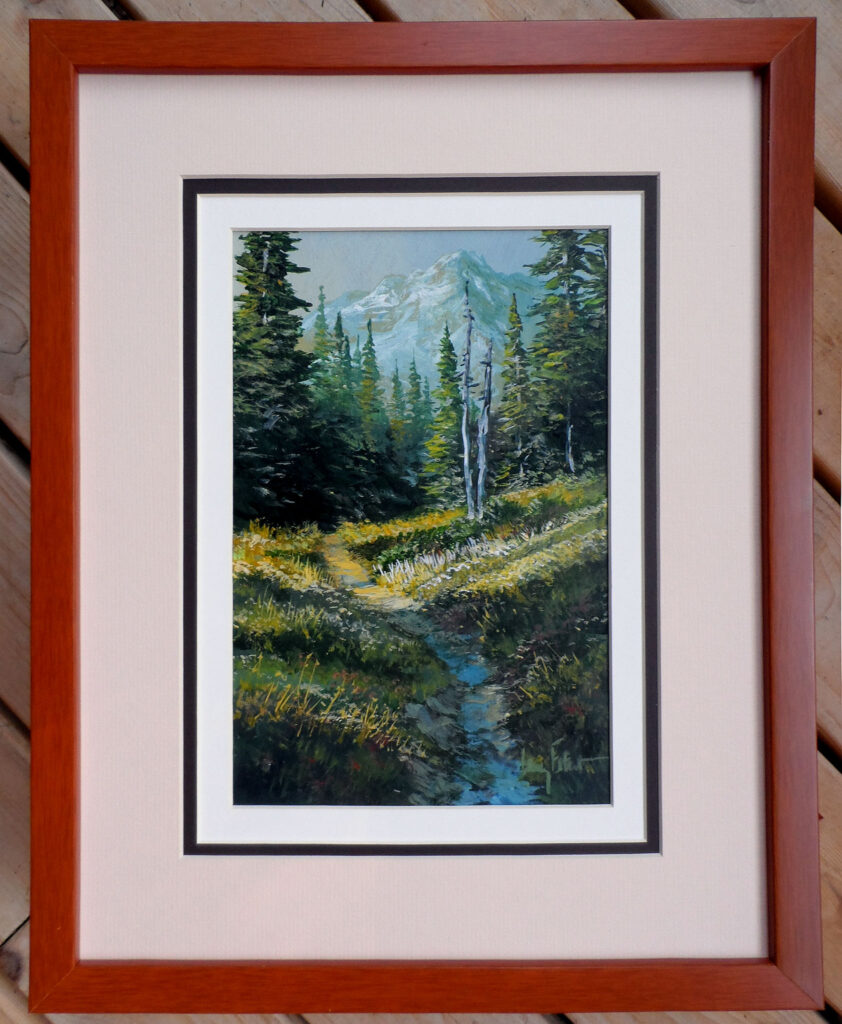We were on the road to Moab, Utah for some business and sunny hiking on the slick-rock. Then – the updated weather report said it was going to be in the mid-90’s, and, not wanting to just be normal people, we turned right instead and went out to the cool, wild and always delightful Olympic Coast. Saved a grand in camping and gas, and how could this be any less amazing than where we were originally going? We’ll get to Utah sooner or later, just not this week. And being able to do these things really is what being an artist is all about.
While sitting on the beach between hikes I did a couple of watercolors. This one was on a partially overcast day, so I kept it to only two colors. This is low tide at Hole-In-the-Wall at Rialto Beach – rated #2 in Olympic National Park sights to see. There were only two other people on the beach!
We continued past this area, past the shipwreck stuff, the eagle’s nest and possible Quileute werewolves left over from the Twilight movies that were filmed here, and in about a mile we came to an amazing place. Most hikers on Rialto Beach only go as far as where the painting was created – a couple of miles through often very soft gravel. But if you go another mile around the next point (low tide only and you’d better plan your escape accordingly), you’ll come to a rocky flat tideland “meadow.” I can only call it a meadow because that’s what it appeared to be, like an absolutely flat (not inclining like a beach) alpine meadow below the high-tide line. (click the photo, it should enlarge so you can see it better) This place was an acre at least, and so full of sea life you couldn’t move without squashing a turban shell, or a turban filled with hermit crab. Eel grass and rockweed covered almost every surface which was interesting because eel grass is normally a sand-thing, certainly not on a rocky headland. We couldn’t count the number of seastars, limpets and mussels. Why this area is so rich we could only imagine. At high tide, it has to be only be a few feet deep, so maybe it’s the extra light, slightly warmer water, who knows – but it was hard Olympic bedrock that was flat. From Cabo to Homer, we’ve never seen anything like it in all our tramping around West Coast beaches.
The original watercolor and ink painting of Hole-in-the-Wall is 8″ x 10″ and $100 unframed.
The double mat with custom wood frame makes it a total of $125 and shipping adds just a bit more depending on your zone or if you take the frame. This is the original painting, NOT a print – and you get the saltwater smudge on the bottom of the paper (not on the painting) for free.
Email us for details.
Thanks for reading this week.
Larry Eifert
Click here to go to the online blog this was to.
Click here to go to our main website – packed with jigsaw puzzles, prints, interpretive portfolios and lots of other stuff.
Click here to check out what Nancy’s currently working on with her photography.
